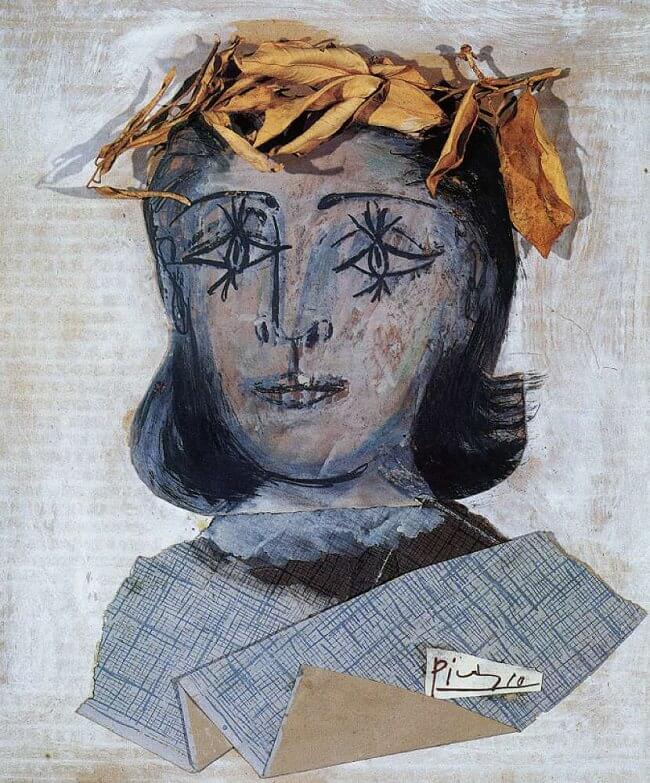Portrait of Dora Maar, 1941 by Pablo Picasso
Dora Maar still continued to be an abiding creative and intellectual influence in Picasso's life, particularly during the early war years. Here, instead of exploring her form in oil Picasso returned to the papiers-colles days of Synthetic Cubism with this highly effective, small, square-shaped work. The dress is fashioned out of folded wallpaper and the face is drawn using gouache, with a golden leaf collage to crown her as his muse. This is mounted on corrugated board whose horizontal lines add an extra dimensional pattern and effective contrast with the chequering of the dress.
The board's color is also echoed in the skin tones, which are a striking grey-blue wash, taking the color from the dress. Despite the chilling effect of this employment of colour, there is a strong sense of harmony and balance about the work. Unlike Picasso's recent return to plastic distortion, the depiction is almost naturalistic. Its proportions make the head just a little larger than life-size, so to a viewer it would be like confronting Dora face-on. However, unlike the portrait of 1937, the startling eyes look out to the horizon rather than down at the viewer. The long aquiline nose still suggests a distanced haughtiness.





















